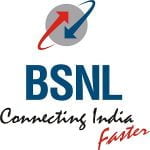
The website redesign project that led to Hertz’s $32 million lawsuit against Accenture “was a catastrophic relationship meltdown of epic proportions,” according to Liz Miller, senior vice president of marketing for the CMO Council. Hertz contends Accenture failed to “deliver the website and apps for which it was so generously paid” in a timely fashion. This failure, Hertz wrote in its April 19 lawsuit filed with US Southern District Court of New York (PDF), cost the car rental company millions in a “tremendously competitive industry.” Hertz wants its money back — all $32 million.
Accenture essentially denied any wrongdoing when a spokesperson issued a statement that said, “We believe the allegations in this lawsuit are without merit, and we intend to vigorously defend our position.”
He said. She said. Beyond the wrongs and rights of the Hertz-Accenture legal battle, there are many lessons to be learned for brands enlisting the digital services of agencies. How do you actually select a service provider/agency? Where do brands and agencies like these most commonly err beyond day one? Miller and other digital experience industry pundits weigh in.
Lawsuit: Not Responsive, Not Functional, Not Finished
But first, some details over the lawsuit. Accenture’s project went south in multiple ways, according to the lawsuit filed by Hertz. Here’s a snapshot of the charges made by the $9.5 billion company against the $39.6 billion digital services provider:
-
Accenture never delivered a functional website or mobile app.
-
Because Accenture failed to properly manage and perform the services, the go-live date of December 2017 was postponed twice, first until January 2018, and then until April 2018.
-
Accenture did not deliver a responsive website and demanded hundreds of thousands of dollars in additional fees to deliver the promised medium-sized layout.
-
Accenture “deliberately disregarded” an extensibility requirement and wrote code so that it was specific to the Hertz brand in North America and could not be used for the Hertz global brand or for the Dollar and Thrifty brands.
-
Accenture’s developers wrote the code for the customer-facing ecommerce website in a way that created serious security vulnerabilities and performance problems. The defects in the FED code were so pervasive that all of Accenture’s work on that component had to be scrapped.
-
Accenture failed to perform proper testing of the software that it developed.
-
Accenture’s code for the Adobe Experience Manager (AEM) component “was seriously flawed.” Hertz wrote in the lawsuit it uses AEM to power its website (Accenture regularly wins Adobe partner awards: a 2018 in digital experienceand 2016 for marketing cloud, for example).
Pick the Right Team Within the Agency
So what have we learned? Let’s start with how you actually select a services provider. Shouldn’t Hertz, after all, have some culpability here? How did they pick Accenture? Were they vetted thoroughly as the right fit? Accenture put on an “impressive, one-day presentation for the Hertz team that included a demonstration of the transformed Hertz digital experience,” according to the lawsuit.
Herein lies a good starting point for brands making sure they have the right services partner. More important than choosing the right partner is choosing the right specific team within the partner, according to Scott Liewehr, president and CEO of Digital Clarity Group, a research and advisory firm whose organization provides research on service partners based on customer feedback. “Just because the agency/firm has a competence doesn’t mean the assigned team has that same competence,” Liewehr said. “Success or failure comes down to the specific team of individuals assigned to the project.”
Understand the capabilities and experience of those team members. According to Liewehr, large, higher-revenue customers do not necessarily get more qualified team members assigned to their engagement. In the Hertz-Accenture story, for instance, neither Hertz as a brand nor its eight-figure budget seem to have mattered, Liewehr said. Smaller, lower-revenue customers certainly do not always get the more-qualified team members. “Those customers who get the best team members either demand them, or they’re just plain lucky,” Liewehr added. “… Request the bios of and interview the essential team members that will be assigned to your engagement.”
Be Leery of Vendor Recommendations
Your vendor tells you to pick a particular service provider. Maybe they’ve done stellar work with them. It’s a consideration in the selection process, but not the be-all determining factor, according to Liewehr. “Do not select a services partner,” he said, “because they were recommended by the vendor. The vendor has many reasons to recommend particular partners, and most are not aligned with the customers’ interests.”
Customers who say they chose a services partner based on the vendor’s recommendation have lower CSAT scores than customers who chose their partners for any other reason, according to Digital Clarity Group’s research. “Even those who choose their services partners based on cost have better outcomes,” he added.
Past Engagements Should Not Be a Determining Factor
You’ve worked with an agency before and had success. It’s often the highest criteria used to select the partner, but just because they’ve completed some engagements in one area doesn’t mean they have expertise installing particular platforms, Liewehr said. “This caution wouldn’t have helped Hertz, but it applies to many others,” he said.
Consider the firm’s domain experience (e.g. with the particular platform being installed), understand the satisfaction of other customers like you that they have worked with, speak with reference customers (preferably ones they don’t provide directly) and validate they understand your needs, Liewehr added.
Does the Project Even Have to Be All In?
Oftentimes organizations mistakenly go “all in” on digital projects when they’ve got a massive amount of digital properties across many different regions. It becomes too much, and the project potentially runs away from them, according to David Atchison, CEO of New Engen. “You have a lot of different facets to solving the problem,” he said. “The company should take the perspective of do I need to do this? How do I start with just a minimum viable product that’s much faster, much better for the consumer, and then build these other things? Obviously, the incentive for the consulting company is not necessarily to do that.” If you don’t start with the principle of what is needed from a customer perspective, or a company perspective, is all the other stuff that you’re building around worth it?
Start With a Website Discovery Project
Too often not enough work is put into learning about actual needs before a web design program gets into gear. Brands should start with a website discovery contract before fleshing out the full website design and development contract, said Jennifer Tanabe, senior director of operations for Investis Digital. “This allows for the agency and the client to do a deep dive into scope and requirements. The end result of a discovery phase is putting together a contract that better aligns with both the agency and the client’s expectations.”
Onboarding Must Be Transparent
Discovery is part of the onboarding process, something that also needs to be completely transparent, according to Tanabe. Ask what the onboarding process looks like, particularly how requirements or scope from the sales process are then translated to the team who will be executing the work. “The onboarding process should feel seamless,” she said. “It’s also important that both the agency and the client set clear expectations so that miscommunication can be avoided.”
Lack of transparency is a mistake agencies often make, especially when it relates to something the agency didn’t get right, she said. “Although it may be difficult to have those tough conversations with a client,” Tanabe said, “I’ve always found that clients are more receptive to honesty.”
Brands need to set the agenda for that onboard meeting, according to Miller. “That onboard meeting should cover the expectations, the gates for the projects, the points of go/no-go and failure,” Miller said. “Set the stage and set the tone.”
Don’t Focus Only on the End Result
Miller said brands should “break down the bigness of it all” before partnering with a service provider on a massive engagement. What are the steps and phases? What are the gates that lead to success? “We are so focused on the end result, in this case, an amazing website and commerce experience that would fundamentally change the Hertz experience forever,” she said.
Ask these questions: What is the legacy infrastructure we are transforming? What is the data system we need to transform? What is the foundation gate? When is that due? What is success? If we don’t hit success, can we continue to advance?
Message to CMOs: Go With Your Gut
Every CMO, every account lead has had that moment when something isn’t feeling right. Miller wonders, if that moment happened with Hertz-Accenture, who didn’t raise that flag? And if they did, were they believed? And if the question was asked of the agency, was the answer honest? “We get easily seduced by the end vision of amazing that we fail to see the sausage making that gets us there. And we leave honesty in the parking lot,” Miller added. “… We mistake agency for God-like expert. That isn’t fair. It should be a partnership, a collaboration, a connected collaboration. On the brand side, we sit down in the pitch waiting to be dazzled and excited. …But are we being honest when the rubber hits the road?”
Get Actively Engaged in the Project
Once engaged, a common mistake is for customers to sit back and let the services partner do all the work, assuming things will just work out because they’re paying their invoices, according to Liewehr. “Customers that have the best outcomes have personnel actively engaged in the projects from beginning to end,” he said. “They not only hold the hired firm accountable every step of the way, but they are actively engaged directly in the project as well, from assessing and mitigating risks, to facilitating decision-making internally, to participating in milestone reviews and regular status meetings.”
Expect and Prepare for Failure
Failures like the kind that Hertz claims against Accenture in its lawsuit are not uncommon, according to Liewehr. Brands often think that by choosing a well-known firm like Accenture that this will somehow ensure success, he said. But, according to his firm’s data, the well-known firms have the same success/failure rates as others, often worse. “Agencies, especially large ones,” Liewehr added, “often cave to the pressure of keeping utilization rates and billability high, so they assign untrained, inexperienced personnel to projects they shouldn’t be assigned to and without proper review procedures in place. There is minimal incentive, nay disincentives, to raise bad news about projects to upper management. If/when things start to go sideways, management is often the last to know, and by then it’s too late to intervene.”











